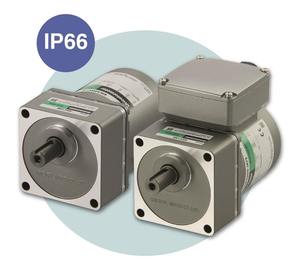

|
Edward Lowton
Editor |


|
| Home> | Energy Management | >Motors and drives | >Addressing the global chip shortage with AC induction motors |
Addressing the global chip shortage with AC induction motors
23 August 2022
Simple, standard applications are well served by AC induction motors. In this global chip shortage, the appeal of a chip-less motor with high IP ratings and low lead times has never been more apparent, says Paul Jepson

DEPENDABLE, HARD-WORKING and not afraid to take on the ‘grunt work’ - this sounds like the perfect job applicant, but these are in fact attributes of AC induction motors.
AC induction motors are easy to use and relatively inexpensive, so are ideal for standard, no-fuss applications. They are perfect for conveyor systems, basic pump systems , turning or polishing machines, for example. All of these require high efficiency but not necessarily precision speed control.
Features that make it easy to use include the ability to connect an AC motor directly to mains power to run at a single speed. Alternatively, it can be connected to a voltage controller (an inverter) for variable speed operation.
The torque-frame size dilemma
If an application specifies high efficiency, the trade-off that an engineer has to consider is torque versus frame size. High efficiency in a motor leads to high torque which increases the frame size. As industrial and consumer products are increasing expected to be more compact, this poses a dilemma.
AC induction motors have a high torque compared with frame size and the Oriental Motor series is particularly versatile, with a wide range of gear heads available and IP ratings that make them ideal for applications as demanding as food processing where they are subjected to frequent washdowns.
Oriental Motor’s K2 and K2S and FPW series in particular offer high IP ratings, sealed construction and short lead times. The K2 and K2S series are sealed to IP66, meaning they are protected from dust ingress and against heavy seas of power jets of water.
The IP66 rating is higher than most other AC motor manufacturers supply as standard. Making them suitable for application that require regular washdowns, such as the food processing industry.
In-house design and manufacturing results in high energy efficiency for the K2 and K2S motors and higher torque gearheads than most other manufacturers’ products, for the same power rating. Energy efficiency conforms to European rating IE3 and IE4.
Aesthetics are also important and the same in-house design development means that the motors are attractive and modern looking. We have had customers buy them simply because they look better on their machine.
Dust and water resistance
Another AC induction motor series from Oriental Motor is the FPW series. These AC motors are powder-coated which seals the motor to further protect against washing down operations. Models in this series are sealed to IP67 which, in addition to protection against dust, means it is protected against immersion in water for 30 minutes at depths up to one meter.
Unlike a brushless DC (BLDC) motor, AC induction motors do not use silicon chips. This is significant, given that during this global chip shortage, standard lead times have been extended to uncomfortable limits worldwide. AC induction motors, on the other hand, are still available on lead times of one week from stock and just four weeks for made-to-order motors.
For relatively simple applications, an AC induction motor is still the best choice and readily available on short lead times which do not disrupt the production cycle.
Paul Jepson is a new business analyst, marketing and distribution at Oriental Motor UK
For more information:
Tel: 01256 347090


















